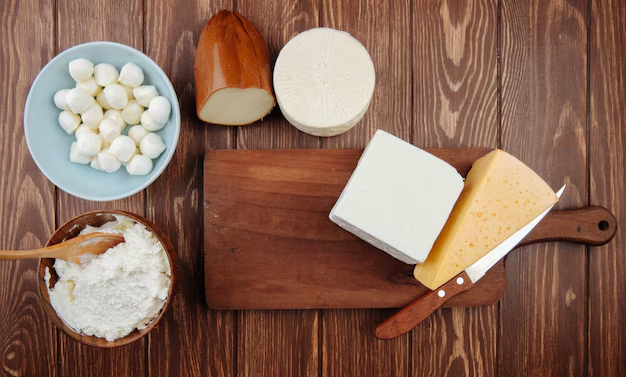Can Margarine Be Left Out of the Fridge: What You Need to Know
There's a tub of margarine sitting on the counter, and you find yourself asking: How long can it stay there before it turns into something less than appealing? This question is more common than you might think, and knowing the answer can help you maintain your culinary investments effectively. In this detailed guide, we'll delve into the practical aspects of keeping margarine fresh, safe, and tasty — whether it's in or out of the fridge.
Understanding Margarine Composition
What Is Margarine Made Of?
At its core, margarine is an artificial butter made primarily from vegetable oils. The ingredients list may include:
- Vegetable oils (such as soybean, corn, palm)
- Water
- Emulsifiers
- Salt
- Artificial flavorings or colorings
These ingredients create a product different from butter, with its own unique nutritional profile and physical properties. The presence of emulsifiers and preservatives generally contributes to the stability of margarine when left at room temperature.
Differences Between Margarine and Butter
Margarine and butter might seem similar, yet they are different in several aspects:
- Flavor and Texture: Butter tends to have a richer taste, while margarine often incorporates flavor additives to mimic this.
- Fat Content: Margarine typically contains less saturated fat, emphasizing polyunsaturated and monounsaturated fats, which can be more beneficial for heart health.
- Storage: Due to its composition, margarine can often be stored at slightly higher temperatures than butter without spoiling quickly.
Understanding these differences is crucial in determining how long margarine can be safely left out.
Margarine Storage Guidelines
How Marginalized Is Room Temperature?
Margarine is designed to be more forgiving than butter when it comes to room temperature exposure. Under normal circumstances, it can be left out for a short period without concern of spoilage. However, some factors influence how quickly margarine can change:
- Temperature: Warmer climates may accelerate spoilage.
- Humidity: Moist environments can encourage the growth of bacteria and mold.
- Air Exposure: Keeping margarine covered reduces its interaction with elements that could degrade it.
General Storage Tips
To ensure your margarine maintains its quality, consider these general storage strategies:
- Refrigerate After Use: For optimal freshness, store margarine in the refrigerator when not in use. This location helps preserve its texture and taste over time.
- Use an Airtight Container: Protect margarine from air by sealing it in an airtight container or plastic wrap.
- Avoid Contamination: Use clean utensils to scoop margarine to prevent bacterial growth.
How Long Can Margarine Be Left Out?
Short-Term Exposure
Generally speaking, margarines, especially those that are specifically crafted for baking or spreading, are stable enough to withstand being left out for up to a day. That said, it's always better to err on the side of caution:
- A Few Hours: Leaving margarine out for this duration will usually cause no harm, provided the conditions aren't excessively warm.
- Up to 24 Hours: This is generally safe but only under cooler room conditions. If you notice a change in color, smell, or texture during this span, reconsider using it.
When to Refrigerate Immediately
- High Temperatures: If your kitchen gets warm, margarine might begin to deteriorate sooner.
- Visible Changes: Any noticeable alterations in appearance or smell should prompt you to refrigerate the item quickly.
Understanding Spoilage Signs
Detecting When Margarine Has Gone Bad
Here are some ways to tell if margarine should be discarded:
- Rancid Smell: An off or sour odor is a strong indicator that the oils have spoiled.
- Color Changes: If the margarine develops any unusual colors, it might be contaminated.
- Texture Alterations: A grainy or separated consistency should be a red flag.
Whenever in doubt, it's wise to discard questionable margarine to avoid health risks.
Why Margarine Spoils
Margarine spoilage is primarily due to the breakdown of oils, leading to oxidation and rancidity. Bacterial growth is another factor, often resulting from improper storage and handling.
Practical Margarine Usage Tips
Making the Most Out of Your Margarine
To get the best shelf life and performance from your margarine:
- Buy in Moderate Quantities: Avoid large tubs if you're not using margarine frequently, reducing the chance of long-term storage.
- Check Expiration Dates: Always aim to use margarine well before its expiration date for the best quality.
- Divide and Conquer: Consider dividing margarine into smaller portions to minimize the time the whole tub is left out.
Cooking and Baking with Margarine
Margarine can be a kitchen staple for various applications:
- Baking: It acts similarly to butter, providing a rich flavor with a slightly different mouthfeel.
- Sautéing: Use margarine to complement sautéed vegetables with its mild taste.
- Spreading: Perfect for spreading on bread, toast, or crackers owing to its creamy consistency.
Visual Summary and Quick Tips
Here's a handy visual summary to encapsulate the essential points about margarine storage:
❌ Avoid Leaving Out Overnight
✅ Safe for a Few Hours – Ideal for temporary left-out periods.
🧊 Refrigerate – Keep margarine fresh and spoilage-free.
🔍 Check for Spoilage – Be attentive to odors and colors.
📍 Keep Airtight – Use appropriate containers to limit exposure.
Final Thoughts: Proper Care for Reliable Results
Leaving margarine out for short periods need not be a concern if you follow the suggested guidelines and storage tips. By understanding margarine's composition, potential spoilage signs, and best storage practices, you can enjoy this versatile spread without any compromise on safety or quality.
Understanding these practices will empower you to manage your food resources wisely while maintaining the integrity of your culinary creations. Remember, a little attention to storage details goes a long way in ensuring a satisfying and safe experience in your culinary adventures.
